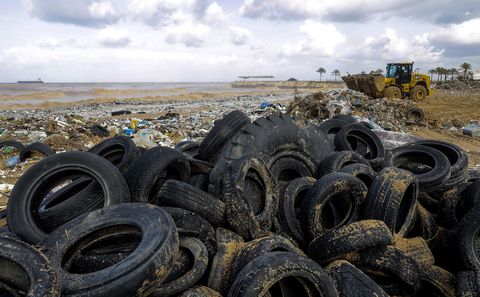The most pressing automotive issue of the 21st century has been reducing tailpipe emissions. From improving mileage to catching cheating diesels and making the transition to battery electric vehicles, the primary suspects of increased pollution were exhaust emissions and the production processes involved in creating vehicles. Though these challenges existentially press on, manufacturers have largely cleaned up their act, as a result of federal mandates and in an effort to cash in on the impending EV boom.
A new issue has presented itself within the automotive world, in a predictable but generally unregulated place—tires. Two of the main ingredients in tires, natural rubber, and carbon black, are heavily production regulated, but these protections are stripped once the ingredients become a tire and hit the road. Now, considering it would be difficult to actively police a shedding tire, the issue lies within the compounds.
 JOSEPH EIDGETTY IMAGES
JOSEPH EIDGETTY IMAGESAs tires are driven, the compound endures daily friction, heat cycles, and roadway obstacles, all of which lead to tread wear. This shed material doesn't disappear and ends up in the environment in which it was used. Different compounds wear at various rates but the effect remains the same, leading to rubber sediments that eventually flow into road runoff and our waterways.
Pollution from tire wear particles is ending up in bodies of freshwater and disturbing the ecology of fish populations across the world.



/Passle/60211dc9e5416a0c14bc63d4/SearchServiceImages/2026-01-12-15-37-05-649-696515215262d0a2d84c75b3.jpg)












